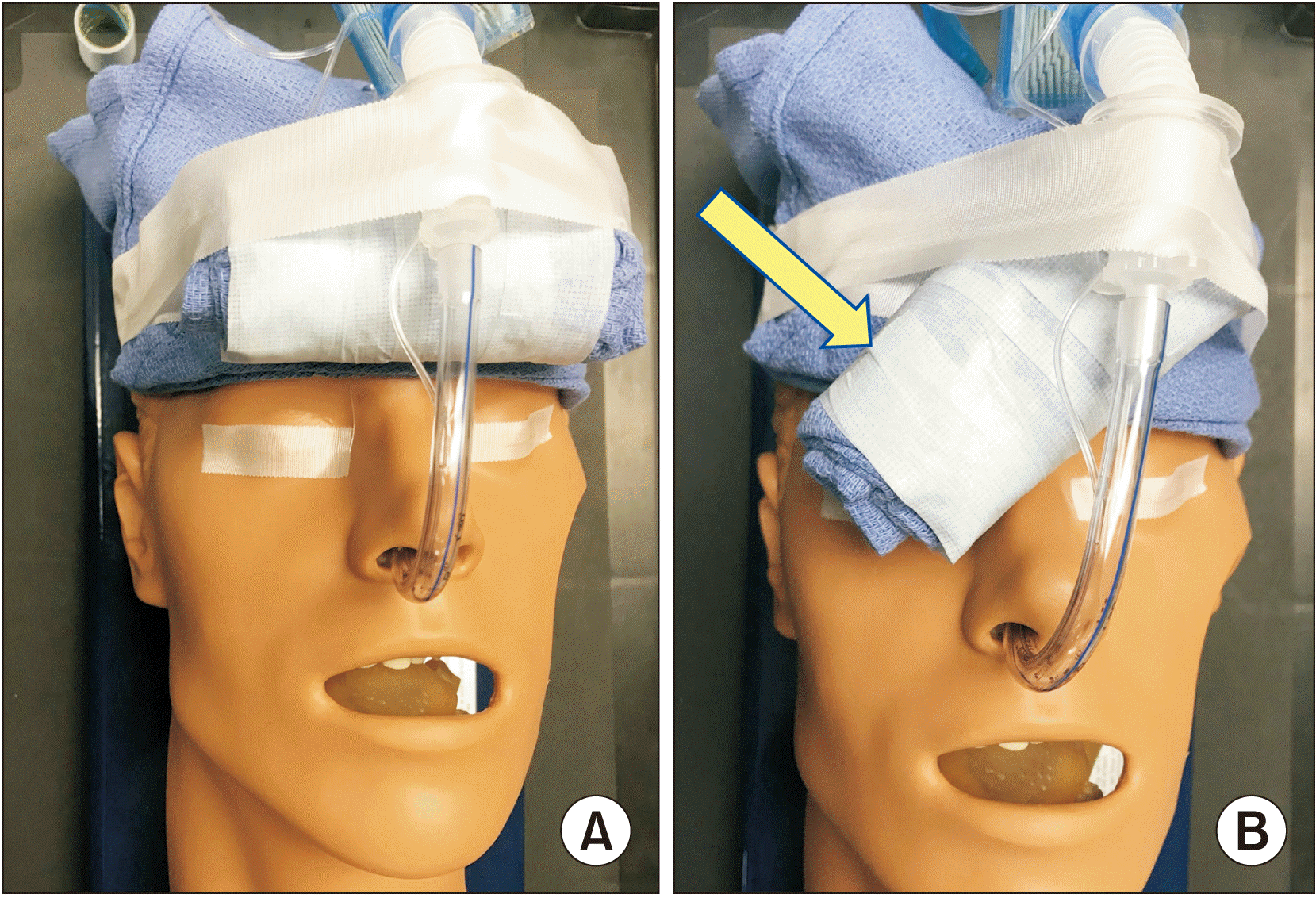Abstract
The oculocardiac reflex is a trigeminal-vagal reflex that manifests as cardiac arrythmias, most often bradycardia. The reflex can be triggered by manipulation of periorbital structures and unintended pressure on the bulbus oculi maxillofacial procedures. In this brief communication, we describe an unusual trigger of the oculocardiac reflex during maxillofacial surgery that resulted in severe bradycardia. This case highlights the need for careful securement of medical devices and attention to surgical technique to avoid undue pressure on draped fascial structures.
Go to : 
Oculocardiac reflex (OCR) is a trigeminal-vagal reflex, also known as the Aschner reflex. It can be triggered by the manipulation of periorbital structures during surgery, most often in ophthalmological, oral maxillofacial, and neurosurgical procedures1,2. For certain oral maxillofacial surgeries, a Ring-Adair-Elwyn (RAE) nasotracheal tube is frequently used to keep the endotracheal (ET) tube away for the surgeon’s field. Adequate fixation of a nasal RAE ET tube is necessary to 1) prevent slippage and unintended extubation and 2) avoid fascial injury, including nasal alar cartilage damage3. The curvature preformed on the patient end of the nasal RAE ET tube needs to be adequately supported with either commercially available headwear devices or other custom-made alternatives such as surgical scrub brushes, surgical gauze, foam pieces, and folded surgical towels positioned over the forehead4. As shown in Fig. 1, this support under the tracheal tube, if not adequately secured, has the potential to slip onto the patients face and fill the orbit concavity. Note that when working under surgical drapes, this can go unnoticed. This image displays the causative mechanism of OCR in a 48-year-old male, who with no underlying cardiorespiratory disease, developed severe bradycardia during dental implant placement under general anesthesia with nasal RAE ET intubation. During the procedure, the heart rate gradually slowed from 80 to 50 bpm, culminating in an episode of severe bradycardia (heart rate, 20-30 bpm) and hypotension. The surgical procedure was halted, and preparations were made to commence chest compressions. Concurrently, 0.2 mg intravenous glycopyrrolate was administered, leading to the resolution of bradycardia and hypotension. At the time of the incident, the cause of critical bradycardia was unclear. At the end of the procedure following removal of the surgical drapes, a folded surgical towel was noted to have slipped onto the orbit, thus transmitting pressure from the surgeon’s hand above the drapes onto the globe. This case illustrates a potential trigger for OCR, which can present as severe bradycardia during dental surgery with a nasal RAE intubation. This reiterates the need for meticulous techniques, not only while securing an ET tube but also on the oral surgeon’s behalf, to prevent undue pressure on draped facial structures.
Go to : 
Notes
Authors’ Contributions
V.A. participated in data collection and wrote the manuscript. V.A. and A.L. participated in the study design and coordination and helped to draft the manuscript. All authors read and approved the final manuscript.
Go to : 
References
1. Brasileiro BF, Sickels JEV, Cunningham LL. 2020; Oculocardiac reflex in an adult with a trapdoor orbital floor fracture: case report, literature review, and differential diagnosis. J Korean Assoc Oral Maxillofac Surg. 46:428–34.
https://doi.org/10.5125/jkaoms.2020.46.6.428
. DOI: 10.5125/jkaoms.2020.46.6.428. PMID: 33377469. PMCID: PMC7783186.

2. Doyle DJ, Mark PW. 1990; Reflex bradycardia during surgery. Can J Anaesth. 37:219–22.
https://doi.org/10.1007/BF03005473
. DOI: 10.1007/BF03005473. PMID: 2088315.

3. Yamamoto T, Flenner M, Schindler E. 2019; Complications associated with nasotracheal intubation and proposal of simple countermeasure. Anaesthesiol Intensive Ther. 51:72–3.
https://doi.org/10.5603/AIT.a2019.0002
. DOI: 10.5603/AIT.a2019.0002. PMID: 30723887.

4. Farbod F, Tuli P, Robertson BF, Jackson IT. 2010; Endotracheal tube fixation methods for optimal stability: a comparison of adhesive tape, suture, and tape-suture fixation. J Craniofac Surg. 21:1250–1.
https://doi.org/10.1097/SCS.0b013e3181e20860
. DOI: 10.1097/SCS.0b013e3181e20860. PMID: 20613600.

Go to : 




 PDF
PDF Citation
Citation Print
Print




 XML Download
XML Download